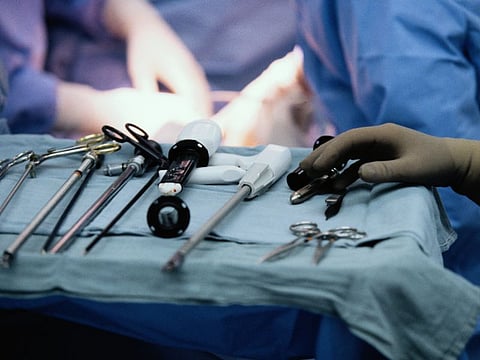WEDNESDAY, Oct. 25, 2017 (HealthDay News) -- A new report on the separation of conjoined twins illustrates the gut-wrenching decisions doctors often have to make in highly complicated medical cases.
The choice was difficult for
doctors at MassGeneral Hospital for Children: Separate twin girls from East Africa in a 14-hour surgery and save the stronger one, or do nothing and lose both children.
In the end, only one of the 22-month-olds survived. But without the operation, both would have perished, said the surgeons, who added they were tested technically and ethically.
"The major challenges we faced were coordinating the large, multidisciplinary team -- including pediatric general surgery, orthopedic surgery, plastic surgery, critical care, cardiology, radiology, nursing, palliative care, social work, ethics and the operating room staff -- and confronting the ethical implications of an operation in which one twin was unlikely to survive," said Dr. Allan Goldstein. He is surgeon-in-chief at the children's hospital.
"Navigating this complex territory was challenging, but worth it and extremely rewarding for everyone involved," Goldstein said in a hospital news release.
Details of the 2016 surgery were published Oct. 26 in the New England Journal of Medicine.
A nonprofit organization in the family's home country helped the family secure the special care the girls needed in the United States.
The girls were connected at the belly and the pelvis. They had three legs between them, one with a misshapen foot, their doctors recalled. The girls shared one liver, and each girl had one underdeveloped kidney and one complete kidney that drained into a shared bladder. Their digestive tracts were attached below the upper small intestine. And their pelvic structures were also combined.
Complicating matters even further, the twins shared an arterial blood supply and one child was dependent on her sister's circulatory system. This twin was also smaller, less alert and less interactive than her sister. Tests revealed she had serious heart defects.
The smaller twin had trouble pumping oxygen throughout her body, and had several episodes of respiratory distress that required admission to the intensive care unit. These developments led the doctors to determine she would not survive separation surgery.
Facing this ethical dilemma, the hospital's pediatric ethics committee concluded that the girls should be viewed as separate patients. They noted, however, there was little chance they could save the smaller twin.
With the support of their daughters' doctors and a religious leader, the parents ultimately decided to proceed with the separation surgery.
During the complex procedure, the smaller twin passed away as expected.
One year later, the larger twin is thriving. She can eat and stand with help and has progressed in her development. She is undergoing physical therapy and will need additional surgery to treat the malformation of her leg and foot.
Her parents have expressed gratitude for the counsel and care they received.
"Everyone here was united for our family's cause," they said. "We couldn't be prouder or happier with how we all came together for the well-being of our child."
More information
The U.S. National Library of Medicine provides more on conjoined twins.


